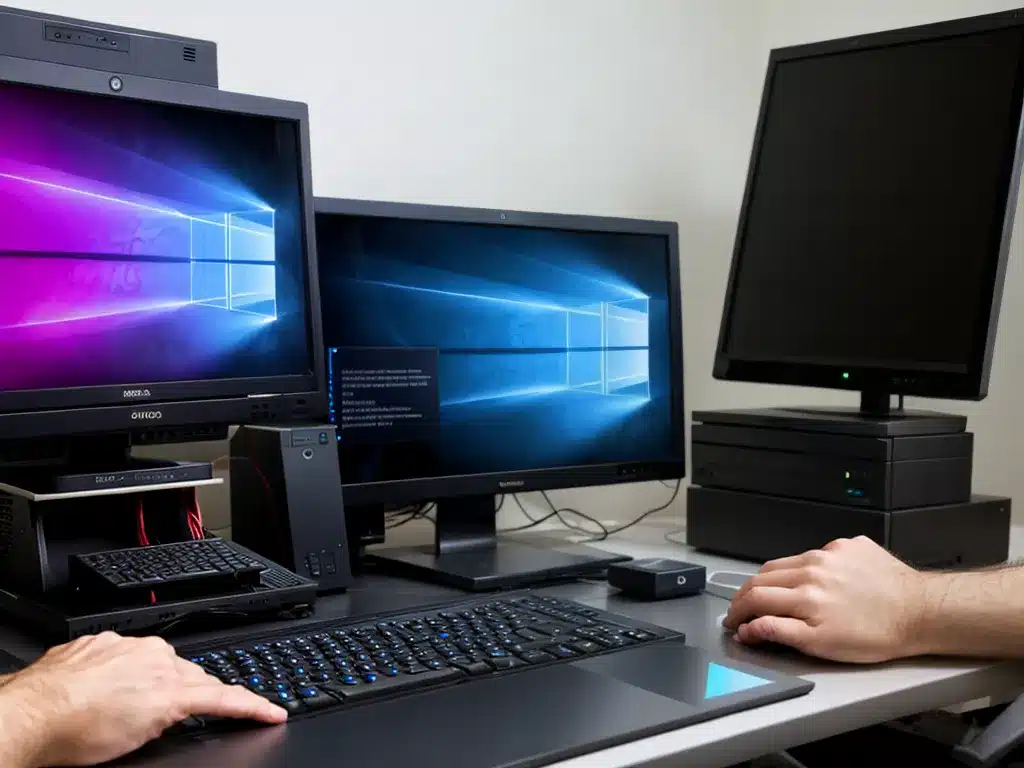
Is Your Old Computer a Security Risk? When to Upgrade
Using an old computer can present significant security risks that many people are unaware of. Here is a comprehensive look at why an aging computer may be vulnerable and when it’s time to upgrade.
Outdated Software is a Security Liability
My old 5 year old laptop is still running Windows 7. I haven’t upgraded to Windows 10 yet because the laptop feels fast enough for my needs. However, this exposes me to security risks:
- Windows 7 reached end of support in 2020. Microsoft no longer provides security updates or technical support. Any new vulnerabilities will remain unpatched.
- Older operating systems lack modern security features. Newer OS versions like Windows 10 have advanced protections like firewalls and malware scanning built-in.
- Vulnerabilities accumulate over time. The longer an OS is used, the more vulnerabilities are discovered. There are over 1,000 known vulnerabilities in Windows 7 compared to fewer than 500 for Windows 10.
I should upgrade to a newer OS to get the latest security protections. Running unsupported software leaves me wide open to attacks.
Outdated Hardware Can’t Keep Up with Modern Threats
My old laptop only has 2 GB of RAM. Modern websites and apps require much more memory to run efficiently. This leads to some security weaknesses:
- With limited RAM, it can’t run modern security software as effectively. Antivirus and anti-malware tools require substantial system resources.
- Page file exploits are possible. With minimal free memory, more data gets paged to disk where it can be stolen.
- Performance issues increase human error. Slow performance frustrates users, making them more likely to disable security settings or fall for social engineering attacks.
Upgrading to a laptop with at least 8 GB of RAM would allow me to run the latest security tools properly. The performance boost also reduces human security risks.
Outdated Hardware Lacks Modern Defenses
My old laptop lacks hardware capabilities that help defend against emerging threats:
- No fingerprint reader or facial recognition. This means no biometric login options that are far more secure than passwords.
- No hardware encryption. Modern chips have built-in acceleration for encrypting data and communications. My old laptop lacks these features.
- No hardware sandboxing. New CPUs can isolate and confine processes in hardware, preventing malicious code from accessing other parts of the system.
By upgrading to a system with modern CPU and security features, I can take advantage of hardware-level protections that software alone cannot provide. This greatly enhances security against even unknown or sophisticated attacks.
When Is It Time to Upgrade for Security?
Here are signs that indicate it’s time to upgrade my computer for better security:
- My OS is no longer supported with security updates
- I cannot install or properly run current security software
- My hardware lacks features like encryption acceleration that are now standard
- I frequently experience performance issues that lead to risky behavior
- My system cannot use multifactor authentication options like biometrics
I also recommend proactively upgrading computers used for sensitive purposes like finance or remote access every 3-5 years. This ensures you stay ahead of emerging threats by retiring systems before they become dangerously outdated.
Of course there are costs to upgrading, but this must be weighed against the risks. An old computer used for casual web browsing may be fine. But for access to any sensitive information or resources, an outdated system poses serious security liabilities that justify replacement.
Tips for Affordable Upgrades
Upgrading can be expensive, but here are tips for getting modern security on a budget:
- For older systems, do a clean install of Linux or a security-focused OS like Qubes to get an updated and hardened software stack.
- If hardware upgrades aren’t affordable, try doubling RAM up to system limits or swapping in a solid state drive to improve performance.
- Use a modern web browser like Firefox even on outdated systems to get frequently updated security patches.
- Replace batteries on laptops to maximize mobility, reducing use in risky public areas.
- Virtualize sensitive workloads on modern secured hardware to protect data while isolating the outdated system.
While upgrading expensive desktops and laptops has a cost, the security value outweighs hardware costs in most cases. Prioritizing upgrades for mission critical and sensitive systems provides strong security without breaking the bank.
Final Thoughts
Using outdated computers inevitably means sacrificing security, but targeted upgrades can mitigate risks. Analyze your usage patterns and assess threats to determine priorities. For systems handling valuable data, try to upgrade operating systems and hardware at least every 3-5 years. This keeps you ahead of the curve on vulnerabilities while managing costs. With basic precautions, you can keep old systems safe enough for more casual use. Just be mindful of the security trade-offs.












